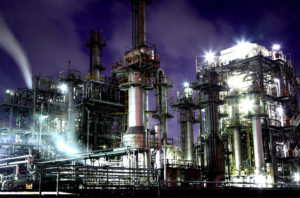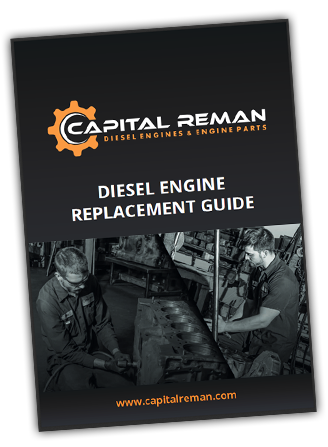Ultra Low Sulfur Diesel Information
 The diesel engine industry has encountered many changes over the past 20 years with the advent of the EPA Tier Emissions Regulations first enacted in 1994. Since then, the regulations and standards of allowable NOx emissions have gotten more strict thus forcing engine manufacturers to make drastic engineering changes to their products. The early years were difficult for the manufactures as emissions technology was often cumbersome, prone to maintenance issues and expensive. However, the DPF, EGR and SCR systems have all gotten much better as the major players in the industry learned to adapt.
The diesel engine industry has encountered many changes over the past 20 years with the advent of the EPA Tier Emissions Regulations first enacted in 1994. Since then, the regulations and standards of allowable NOx emissions have gotten more strict thus forcing engine manufacturers to make drastic engineering changes to their products. The early years were difficult for the manufactures as emissions technology was often cumbersome, prone to maintenance issues and expensive. However, the DPF, EGR and SCR systems have all gotten much better as the major players in the industry learned to adapt.
Ultra Low Sulfur Diesel Implementation Program
In addition to technology changes on the diesel engine themselves the EPA enacted rules for diesel fuel itself. Ultra-low-sulfur diesel was first proposed by the EPA as the new standard fuel back in 2006 which reduces the amount of sulfur particulate by 97% over Low Sulfur Diesel. The proposal became legislation and ultra low sulfur diesel (ULSD) fuel was first rolled out on October 15, 2006 in the United States minus Alaska which switched over completely in 2010. California was the first state to require ultra low sulfur diesel starting on Sept 1, 2006. The diesel fuel regulation applies to all brands of diesel fuel, additives, and blended kerosene fuels. The regulation originally did not apply to locomotives, marine or off-road / off-highway uses. The regulation integration was fully complete on December 1, 2010. In 2007 Off-Highway diesel fuel was also mandated to move to 500 parts per million (ppm) of sulfur particles. Locomotive and Marine fuels were originally grandfathered in but were later mandated under the same restrictions. Railroad and Marine applications were regulated to be at 500 ppm by 2012. By 2014 all highway, off-road, railroad and marine engines had to run on ULSD. The 2006 ruling had the biggest impact on refineries. As of June of 2006 all US refiners were required to produce 80% of their diesel fuel as ULSD. Today all diesel is ULSD. The ruling also changed the way manufacturers marketed their fuels requiring them to label all diesel fuel, additives, blends, and kerosene pumps with EPA authorized language. Other new EPA mandates included verbiage changes to product transfer documents and sulfur-content testing standards to prevent mislabeling and misfiling.
The 2006 ruling had the biggest impact on refineries. As of June of 2006 all US refiners were required to produce 80% of their diesel fuel as ULSD. Today all diesel is ULSD. The ruling also changed the way manufacturers marketed their fuels requiring them to label all diesel fuel, additives, blends, and kerosene pumps with EPA authorized language. Other new EPA mandates included verbiage changes to product transfer documents and sulfur-content testing standards to prevent mislabeling and misfiling.
Ultra low sulfur diesel (ULSD) only contains 15 ppm of sulfur particulate which is significantly lower than the old standard of 500 ppm with low sulfur diesel (LSD). The 15 ppm fuels are designed to be run with newer diesel engines fitted with emissions controls systems in accordance with the Tier Ratings System. Running LSD with a new diesel engine can serious damage the advanced emissions control systems on the engine. With the advent of ULSD European diesel engines can now run in the United States. For many years previous to the EPA ruling, European diesel enginesonly ran on ULSD and could not be converted to run on LSD in the United States.
Aftermath of Switch to Ultra Low Sulfur Diesel (ULSD)
 The move to ULSD has seen an influx of diesel fueled on-highway vehicles into the US. Up until the Volkswagen Scandal, (Diesegate),diesel engines were selling more than they ever had in the past 30 years. From 2007 – 2010 the government had laxed standards during the transition to ULSD. There were significant government incentives for companies to produce diesel vehicles with new emissions friendly engines. As a result Nissan, Ford, Subaru, Toyota and Honda either produced or looked into producing diesel cars to compete with Volkswagen, Mercedes-Benz and BMW.
The move to ULSD has seen an influx of diesel fueled on-highway vehicles into the US. Up until the Volkswagen Scandal, (Diesegate),diesel engines were selling more than they ever had in the past 30 years. From 2007 – 2010 the government had laxed standards during the transition to ULSD. There were significant government incentives for companies to produce diesel vehicles with new emissions friendly engines. As a result Nissan, Ford, Subaru, Toyota and Honda either produced or looked into producing diesel cars to compete with Volkswagen, Mercedes-Benz and BMW.
The new laws were implemented without any major issues. Refiners, wholesalers, retailers and consumers all adapted the changes well. The EPA estimates that nitrogen oxide emissions were reduced by 2.6 million tons per year and soot/particulate matter was reduced by 110,000 tons per year.




